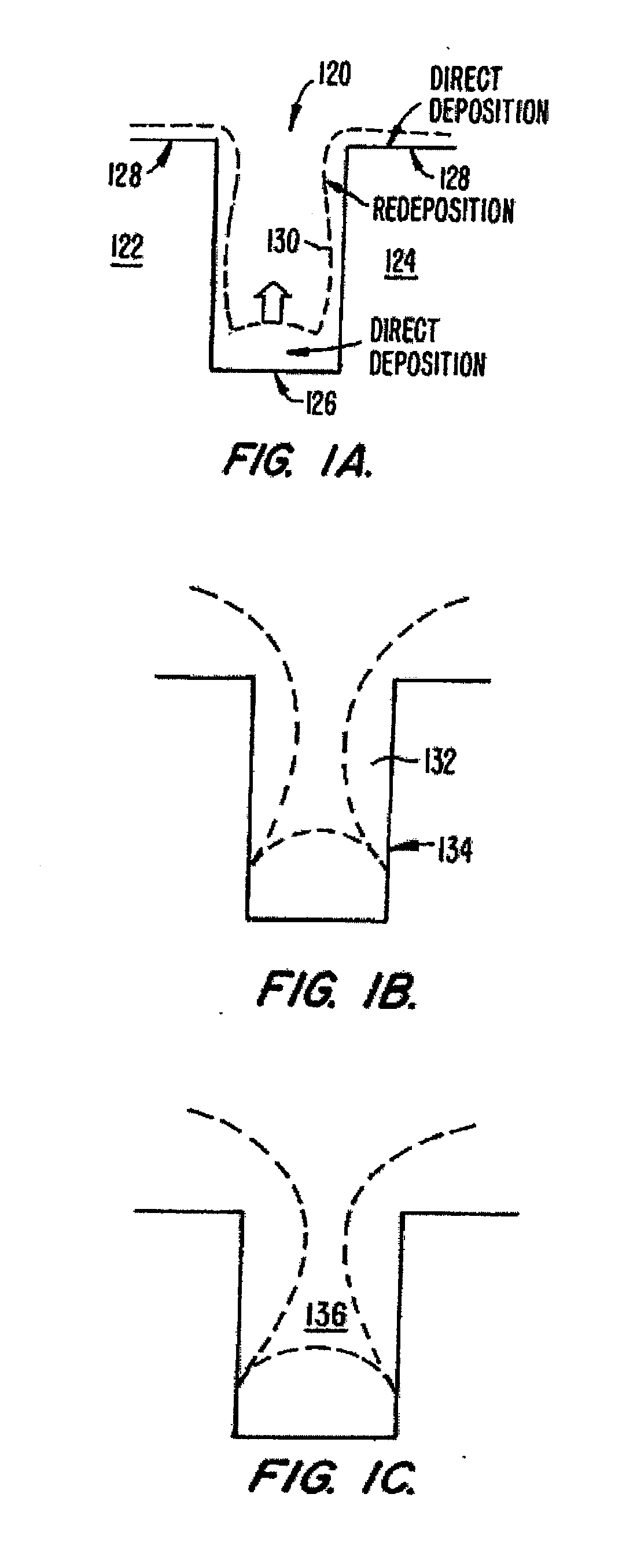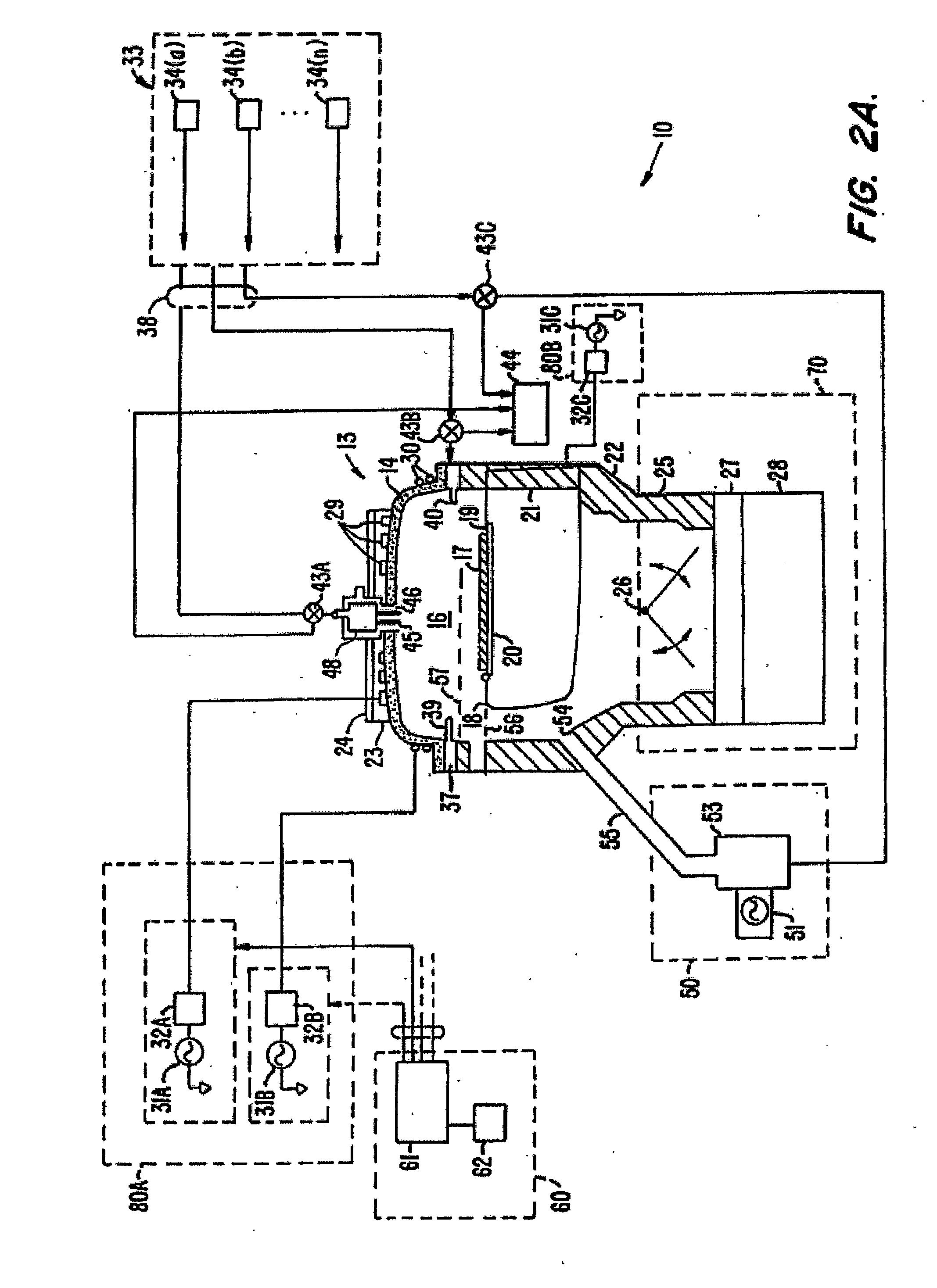Integrated process modulation (IPM) a novel solution for gapfill with hdp-cvd
a technology of integrated process and cvd, which is applied in the field of integrated process modulation (ipm) a novel solution for gapfill with hdp-cvd, can solve the problems of difficult to fill spaces using conventional cvd methods, increased aspect ratio gaps in some applications, and limited sputtering angular redistribution of sputtered materials, so as to reduce moisture in the layer and prevent the effect of attack
- Summary
- Abstract
- Description
- Claims
- Application Information
AI Technical Summary
Benefits of technology
Problems solved by technology
Method used
Image
Examples
Embodiment Construction
[0024]Introduction
[0025]Embodiments of the invention pertain to a high-density-plasma chemical-vapor-deposition (“HDP-CVD”) method applicable, for example, to depositing layers in shallow trench isolation (“STI”) applications. Embodiments of the invention permit material to be deposited with substantially 100% gapfill for integrated circuits having small feature sizes (90 nm or less). Bottom-up gapfill may be achieved inside very aggressive trenches having high aspect ratios.
[0026]Embodiments of the present invention can be implemented using a variety of high density plasma CVD substrate processing chambers including chambers in which a plasma is formed by the application of RF energy to a coil that at least partially surrounds a portion of the chamber and chambers that use ECR plasma formation techniques. An example of an inductively-coupled HDP-CVD chamber in which embodiments of the method of the present invention can be practiced is set forth below.
[0027]Exemplary Substrate Proc...
PUM
 Login to View More
Login to View More Abstract
Description
Claims
Application Information
 Login to View More
Login to View More - R&D
- Intellectual Property
- Life Sciences
- Materials
- Tech Scout
- Unparalleled Data Quality
- Higher Quality Content
- 60% Fewer Hallucinations
Browse by: Latest US Patents, China's latest patents, Technical Efficacy Thesaurus, Application Domain, Technology Topic, Popular Technical Reports.
© 2025 PatSnap. All rights reserved.Legal|Privacy policy|Modern Slavery Act Transparency Statement|Sitemap|About US| Contact US: help@patsnap.com



